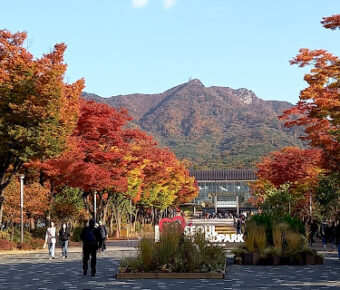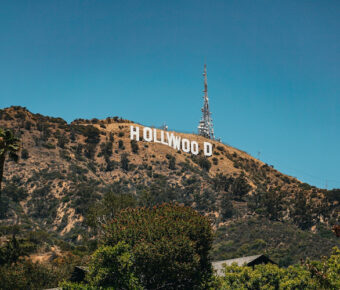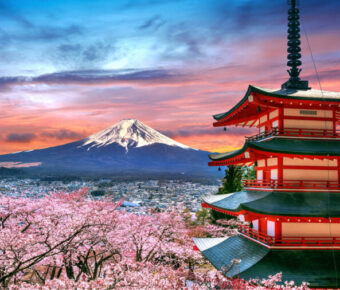
Paris vs Lyon: Which French City Offers the Best Cultural Experience in 2025?
Choosing between Paris and Lyon feels like picking between two beloved French siblings. Both cities offer a rich tapestry of culture, history, and amazing food – yet each brings its own special magic to the table. Paris needs 3-7 days to explore properly, while Lyon can be experienced well in 2-5 days.
Lyon sits snugly between two rivers, packed with Renaissance buildings and hidden courtyards that tell stories of centuries past. The old town, Vieux Lyon, earned UNESCO World Heritage status for good reason – its narrow streets and traboules (secret passages) transport visitors back in time. Paris dazzles with iconic landmarks and world-class museums, making it perfect for first-time visitors to France.
The choice comes down to what kind of French experience a traveler seeks. Paris brings grand monuments and famous art, while Lyon offers a more intimate peek into authentic French life. Both cities serve up incredible food scenes – Paris with its elegant restaurants and Lyon with its traditional bouchons.
Table of Contents
- Geographic and Demographic Overview
- Location and Size
- Population and Density
- Cultural Significance and History
- Historical Landmarks
- Cultural Heritage
- Local Cuisine and Gastronomy
- Typical Dishes and Specialties
- Gastronomic Reputation
- Tourism and Attractions
- Iconic Structures and Museums
- Parks and Outdoor Activities
- Arts, Entertainment and Nightlife
- Art Galleries and Exhibitions
- Live Music and Theatres
- Economic and Lifestyle Comparison
- Cost of Living and Accommodation
- Job Market and Business Opportunities
- Transportation and Mobility
- Public Transport Systems
- Ease of Navigation
- Fashion, Shopping, and Local Markets
- Boutiques and Designer Stores
- Flea Markets and Unique Finds
- Climate and Weather Patterns
- Average Temperatures
- Seasonal Activities
- Frequently Asked Questions
- What are the key differences in cultural experiences between Paris and Lyon?
- How do the living costs in Paris compare with those in Lyon?
- Can you highlight the historical significance of both Paris and Lyon?
- What are the notable differences in cuisine between Paris and Lyon?
- How does the quality of life in Lyon differ from that of Paris?
- What are the transportation options available when traveling between Paris and Lyon?
- Book Your Dream Experience
- More Travel Guides
Geographic and Demographic Overview
Paris and Lyon stand as two of France’s most significant cities, each with distinct geographic footprints and population patterns that shape their urban character.
Location and Size

Paris sits in northern France along the Seine River, serving as the heart of the Île-de-France region. The city proper spans 105 square kilometers, divided into 20 arrondissements that spiral outward from the center.
Lyon occupies a strategic spot in east-central France, where the Rhône and Saône rivers meet. The city covers 48 square kilometers, making it less than half the size of Paris.
Both cities benefit from excellent transport connections. Lyon’s position makes it a natural gateway to the Alps, while Paris acts as a central hub for rail and air travel across Europe.
Population and Density

Paris packs an impressive population of over 2.2 million people within its city limits. The greater Paris metropolitan area holds about 12.3 million residents – roughly 18% of France’s total population.
Lyon’s city center houses around 480,000 people, placing it as France’s third-largest city after Paris and Marseille.
The population density tells an interesting story. Paris fits over 21,000 people into each square kilometer, while Lyon maintains a more moderate density of about 10,000 people per square kilometer.
Both cities continue to grow, with their metropolitan areas expanding beyond their historic boundaries. The suburbs and surrounding communities play crucial roles in each city’s development.
Cultural Significance and History
Both Paris and Lyon hold special places in French history and culture. Each city preserves centuries of heritage through distinct architecture, artistic movements, and religious monuments.
Historical Landmarks
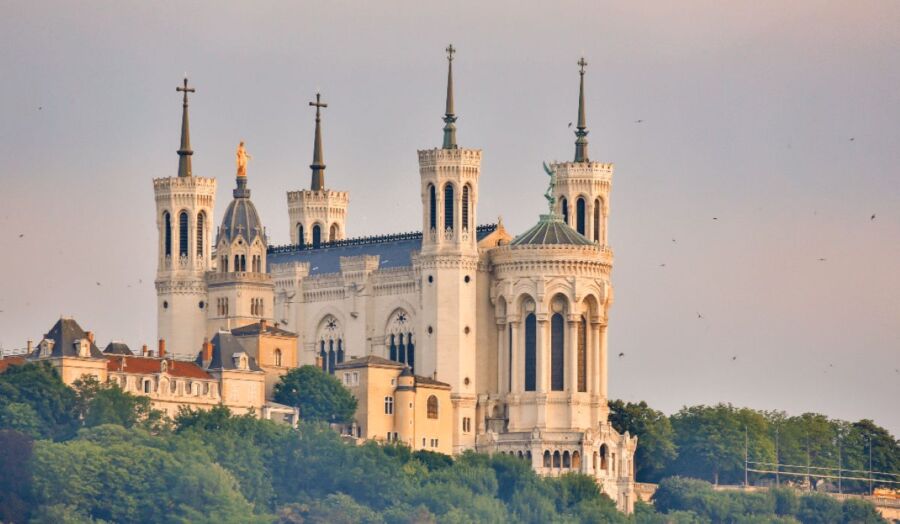
The Basilique Notre-Dame de Fourvière watches over Lyon from its hilltop perch, built between 1872 and 1884. Its stunning mix of Gothic and Byzantine styles creates an unforgettable silhouette against the sky.
Vieux Lyon features one of Europe’s largest Renaissance districts. The narrow cobblestone streets and hidden passageways called traboules showcase medieval and Renaissance architecture from the 15th and 16th centuries.
Paris’s Sacré-Cœur Basilica stands proudly in Montmartre, marking the highest point in the city. This white marble church combines Roman and Byzantine styles, built between 1875 and 1914.
Cultural Heritage

Lyon earned UNESCO World Heritage status for its remarkable architectural preservation. The city’s silk-weaving history lives on in the canuts district, where former workshops now house art galleries and boutiques.
Paris shaped modern art through movements like Impressionism. The city’s museums, including the Louvre and Musée d’Orsay, house some of the world’s most important art collections.
Lyon’s reputation as France’s culinary capital stems from its traditional bouchons – small restaurants serving local specialties. These eateries preserve cooking techniques passed down through generations.
The artistic spirit of Montmartre continues to thrive, with painters still setting up their easels in Place du Tertre, just as their predecessors did in the 19th century.
Local Cuisine and Gastronomy
Both Paris and Lyon stand out for their incredible food scenes, but each city brings its own distinct flavors and dining traditions to the table. Lyon’s bouchons and Paris’s bistros create two unique culinary identities worth exploring.
Typical Dishes and Specialties
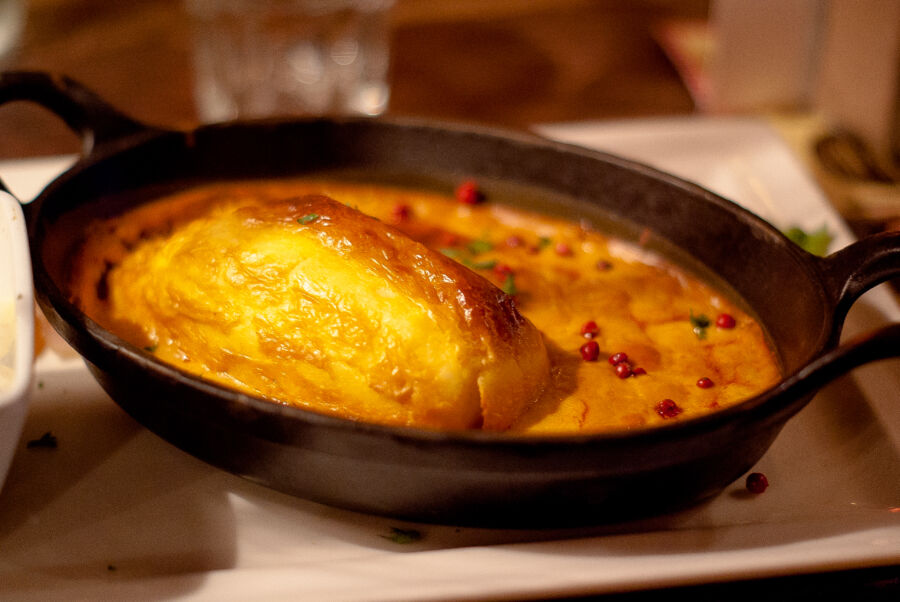
Lyon takes pride in its hearty regional dishes. The city’s famous quenelles are light, fluffy dumplings made with pike fish and served in a rich cream sauce. Traditional bouchons serve local favorites like andouillette sausage and tender braised pork.
Paris shines with classic French dishes like steak-frites and coq au vin. The city’s cafes and bistros serve perfect croissants and crusty baguettes alongside rich onion soup and butter-laden escargot.
Local markets in both cities showcase fresh ingredients. Lyon’s Les Halles de Lyon Paul Bocuse features regional cheeses and charcuterie. Paris’s Marché Bastille offers fresh produce, meats, and seafood.
Gastronomic Reputation
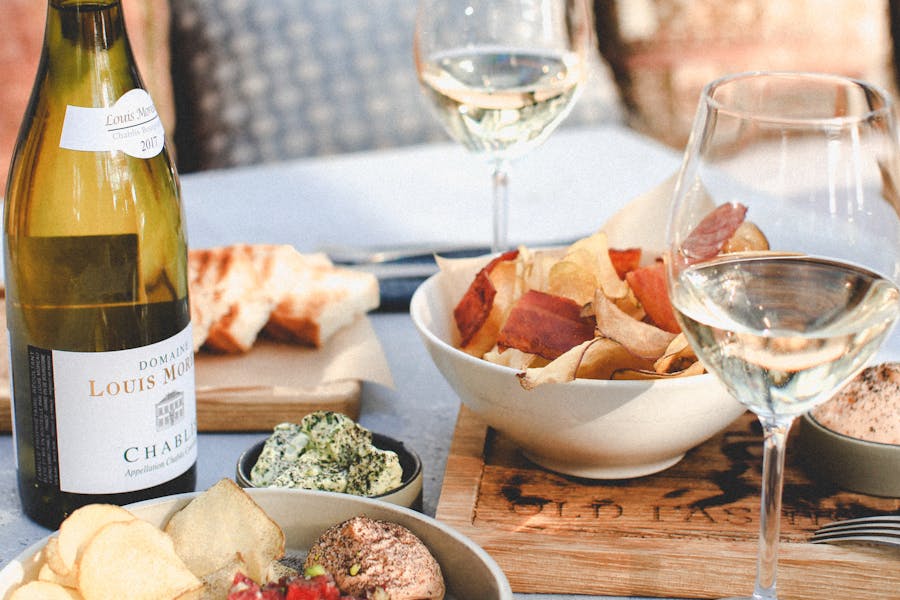
Lyon earned its nickname as France’s gastronomic capital. The city has over 4,000 restaurants, including 20 Michelin-starred establishments. Traditional bouchons preserve authentic Lyonnais cooking methods passed down through generations.
Paris matches Lyon’s food passion with its own culinary excellence. The city hosts world-class cooking schools and renowned chefs. Small wine bars and neighborhood bistros serve excellent French wines paired with seasonal dishes.
Both cities embrace different dining styles. Lyon focuses on rustic, homestyle cooking in cozy bouchons. Paris offers more variety, from casual corner cafes to elegant fine dining restaurants.
Tourism and Attractions
Paris and Lyon both offer amazing places to visit, with Paris known for world-famous monuments and Lyon featuring charming historical sites. These two cities give tourists different experiences in French culture and beauty.
Iconic Structures and Museums

The Eiffel Tower stands as Paris’s most recognizable symbol, drawing millions of visitors each year. The iron structure offers stunning views of the city from its observation decks. The Louvre houses thousands of art pieces, including the famous Mona Lisa, while the Musée d’Orsay showcases incredible Impressionist works in a converted train station.
Lyon’s architectural gems include the Basilica of Notre-Dame de Fourvière, which sits high above the city. The building’s white marble facades and golden Virgin Mary statue create an unforgettable sight.
The Musée des Beaux-Arts in Lyon ranks as France’s second-largest art museum. Its collection spans from ancient Egypt to modern art, housed in a former abbey.
Parks and Outdoor Activities

The Parc de la Tête d’Or in Lyon stands out as one of Europe’s largest urban parks. It features a free zoo, botanical gardens, and a lake perfect for boat rides. Kids love feeding the ducks and exploring the rose garden.
Paris offers the Luxembourg Gardens, where visitors can relax on green lawns or watch children sail toy boats on the central pond. The Tuileries Garden provides a peaceful escape between the Louvre and Place de la Concorde.
Both cities feature riverside paths for walking or cycling. Lyon’s banks offer casual restaurants and wine bars, while Paris’s Seine features evening boat tours passing lit-up monuments.
Arts, Entertainment and Nightlife
Paris and Lyon both offer rich cultural experiences, with Paris taking the lead in famous art museums while Lyon shines with its intimate music venues and historic theaters.
Art Galleries and Exhibitions

The Centre Pompidou stands out as Paris’s modern art hub, with its unique inside-out architecture and world-class contemporary exhibits. The city boasts over 1,000 art galleries spread across neighborhoods like Le Marais and Saint-Germain-des-Prés.
Lyon’s art scene centers around the Musée des Beaux-Arts, housed in a former abbey. The museum showcases impressive collections from ancient Egypt to modern art. Small independent galleries cluster in the Croix-Rousse district, giving visitors a more personal art experience.
Live Music and Theatres

Paris sets the stage with legendary venues like the Opéra Garnier and Théâtre du Châtelet. The city comes alive at night with jazz clubs in the Latin Quarter and indie music spots in Belleville.
Lyon’s music scene thrives in smaller venues, especially in the Terreaux neighborhood. The historic Théâtre des Célestins presents classic French plays and modern productions. Local bars often feature live bands, creating an authentic French nightlife experience away from tourist crowds.
Many Lyon venues offer both dinner and shows, mixing the city’s famous food culture with entertainment. Street performers add charm to both cities’ evening atmospheres, especially in Lyon’s Vieux Lyon district and Paris’s Montmartre area.
Economic and Lifestyle Comparison
Paris and Lyon present stark differences in their economic landscapes and daily living costs, with Lyon offering significant savings while maintaining a high quality of life.
Cost of Living and Accommodation

Living expenses in Lyon are 32% lower than Paris, making it an attractive choice for people seeking a more affordable French lifestyle. Rent prices show the biggest gap – Lyon’s housing costs are 67% less than the capital city.
A typical one-bedroom apartment in central Lyon costs around €800 monthly. The same apartment in Paris often exceeds €1,500.
Groceries and restaurant prices in Lyon are slightly cheaper too. A meal at a mid-range restaurant in Lyon costs about 6% less than Paris.
Your money goes further in Lyon. The average salary covers living expenses for nearly 2 months, compared to 1.4 months in Paris.
Job Market and Business Opportunities
Paris dominates as France’s business hub with headquarters of major fashion houses, design firms, and international companies. The city offers more job opportunities in finance, tech, and luxury industries.
Lyon shines in different sectors. The city has strong manufacturing, healthcare, and technology industries. Many small and medium businesses choose Lyon for its lower operating costs.
Startup culture thrives in both cities. Lyon attracts entrepreneurs with cheaper office space and living costs. The smaller business community makes networking easier.
French and international companies often place regional offices in Lyon while keeping their main headquarters in Paris.
Transportation and Mobility
Both Paris and Lyon offer modern transit networks, letting visitors explore with ease. The cities differ in their network size, pricing, and how simple they are to figure out.
Public Transport Systems
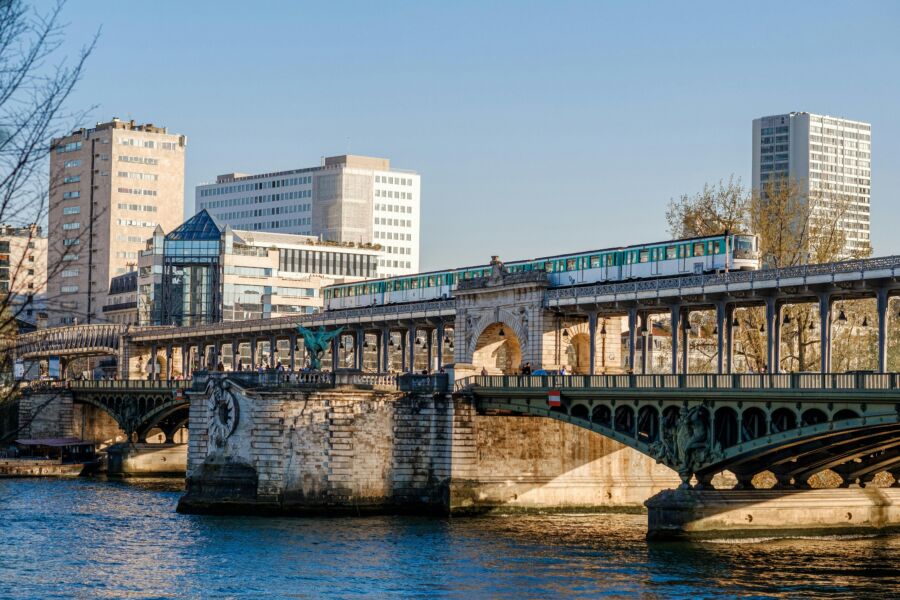
Paris runs an extensive Metro system with 16 lines covering most tourist spots. The Metro connects smoothly with RER trains, buses, and trams. A single ticket costs €1.90, and visitors can buy multi-day passes to save money.
Lyon’s public transport is smaller but very efficient. The city has 4 Metro lines, 7 tram routes, and many bus lines. The T1 tram takes tourists to popular spots like the Parc de la Tête d’Or. Tickets are cheaper than in Paris.
Both cities link well to their airports. The Rhône Express connects Lyon-Saint Exupéry Airport to the city center. Paris has three airports, with direct train links to each one.

Lyon’s compact size makes it simple to get around. The Metro system uses clear signs and maps that are easy to read. Most tourist areas sit close together, which means less time spent on trains.
Paris has more stations and lines to learn. The bigger network can feel overwhelming at first. Maps might take time to understand, with many connection points between lines.
The Paris Metro runs later into the night than Lyon’s system. This helps tourists who want to enjoy evening activities. Lyon’s transit closes earlier, around 12:30 AM.
Street signs in Lyon tend to be clearer than Paris. Walking routes through the Old Town and traboules make exploring fun. Paris offers Seine River boats as another way to move between landmarks.
Fashion, Shopping, and Local Markets
Paris stands as France’s ultimate shopping destination, while Lyon offers a more laid-back retail experience with unique local shops and markets scattered throughout its historic districts.
Boutiques and Designer Stores
The Marais district in Paris sparkles with high-end fashion boutiques and designer flagship stores. Iconic brands like Louis Vuitton, Chanel, and Hermès line Rue du Faubourg Saint-Honoré. Many small independent designers also showcase their latest collections in tiny, stylish shops tucked away on cobblestone streets.
Lyon takes a different approach with its shopping scene. The Rue de la République features a mix of well-known brands and local designers. The Carré d’Or district houses elegant boutiques in 19th-century buildings, offering a more intimate shopping experience than Paris’s bustling fashion areas.
Flea Markets and Unique Finds
The Saint-Ouen flea market in Paris draws treasure hunters from around the world. This massive market contains over 2,500 vendors selling antiques, vintage clothing, and rare collectibles. The Marché aux Puces de Villeurbanne in Lyon might be smaller, but it charms visitors with its authentic French atmosphere.
Lyon’s markets focus on local artisans and craftspeople. The covered markets of Les Halles Paul Bocuse showcase regional textiles and handmade goods alongside fresh produce. Small vintage shops dot the Croix-Rousse neighborhood, a former silk-working district rich in history.
Both cities host seasonal markets where local designers sell handcrafted jewelry, accessories, and clothing. These pop-up events give shoppers direct access to emerging French talent and unique pieces not found in typical stores.
Climate and Weather Patterns
Both Paris and Lyon experience distinct weather patterns that shape daily life and activities throughout the year. The two cities share a similar climate type, but Lyon tends to see more temperature extremes.
Average Temperatures
Paris maintains milder temperatures than Lyon year-round. Winter averages hover around 4.6°C (40°F) in January for Paris, while Lyon dips slightly lower. Summer brings pleasant warmth to both cities, with Paris reaching about 20.5°C (69°F) in July.
Lyon experiences greater temperature swings between seasons. The proximity to the Alps influences its weather patterns, creating cooler winters and warmer summers than Paris.
Rain patterns differ between the cities too. Lyon sees more wet days, especially from April through December. May is particularly wet, with about 10 rainy days on average.
Seasonal Activities

Spring brings perfect weather for walking tours in both cities. The Luxembourg Gardens in Paris come alive with locals and tourists enjoying picnics and boat rides.
Lyon’s warmer summers make it ideal for evening riverside strolls along the Rhône and Saône. The city’s outdoor cafes stay busy late into the night during these months.
Winter activities differ slightly between the cities. Paris’s milder winters keep outdoor Christmas markets comfortable for browsing. Lyon’s colder winter temps make its indoor attractions, like the Musée des Beaux-Arts, extra appealing.
Both cities offer excellent cycling opportunities in fall, when temperatures cool and crowds thin out. This season brings stunning colors to Paris’s Tuileries Garden and Lyon’s Parc de la Tête d’Or.
Frequently Asked Questions
Paris and Lyon offer distinct experiences in food, culture, history, and daily life that make each city special in its own way. The choice between them depends on what matters most to you as a traveler or resident.
What are the key differences in cultural experiences between Paris and Lyon?
Paris shines with world-famous museums like the Louvre and iconic landmarks like the Eiffel Tower. The city buzzes with art galleries, fashion shows, and theater performances.
Lyon takes pride in its more laid-back cultural scene. The city’s Renaissance architecture and narrow streets in Vieux Lyon create a charming atmosphere for exploring local traditions.
How do the living costs in Paris compare with those in Lyon?
Housing costs in Paris run about 40% higher than in Lyon. A one-bedroom apartment in central Paris costs around €1,500 per month.
Lyon offers more affordable living options. Restaurant meals, groceries, and entertainment typically cost 15-25% less than in Paris.
Can you highlight the historical significance of both Paris and Lyon?
Paris shaped French history as the center of government since the Middle Ages. Its boulevards, monuments, and palaces tell stories of revolution and empire.
Lyon played a crucial role in silk production and trade during the Renaissance. Its traboules (hidden passageways) and ancient Roman ruins showcase different historical periods.
What are the notable differences in cuisine between Paris and Lyon?
Paris excels in fine dining and international food scenes. The city mixes traditional French cuisine with modern global influences.
Lyon earned its reputation as France’s food capital. Traditional bouchons serve hearty local specialties like quenelles and coq au vin.
How does the quality of life in Lyon differ from that of Paris?
Lyon offers a slower pace with shorter commute times and easier access to outdoor activities. The city sits between two rivers with plenty of green spaces.
Paris provides more job opportunities and cultural events but comes with bigger crowds and a faster lifestyle. The city can feel overwhelming to some people.
What are the transportation options available when traveling between Paris and Lyon?
High-speed TGV trains connect the cities in about 2 hours, with multiple departures daily. Book guided tours and activities in either city.
Driving takes around 4-5 hours depending on traffic. Regular flights also operate between both cities’ airports.
